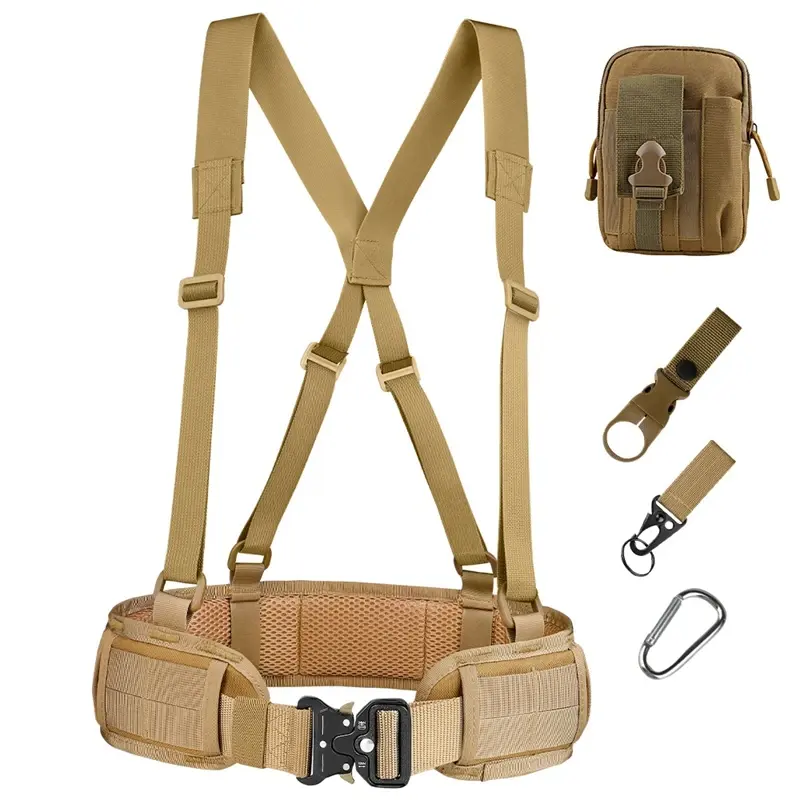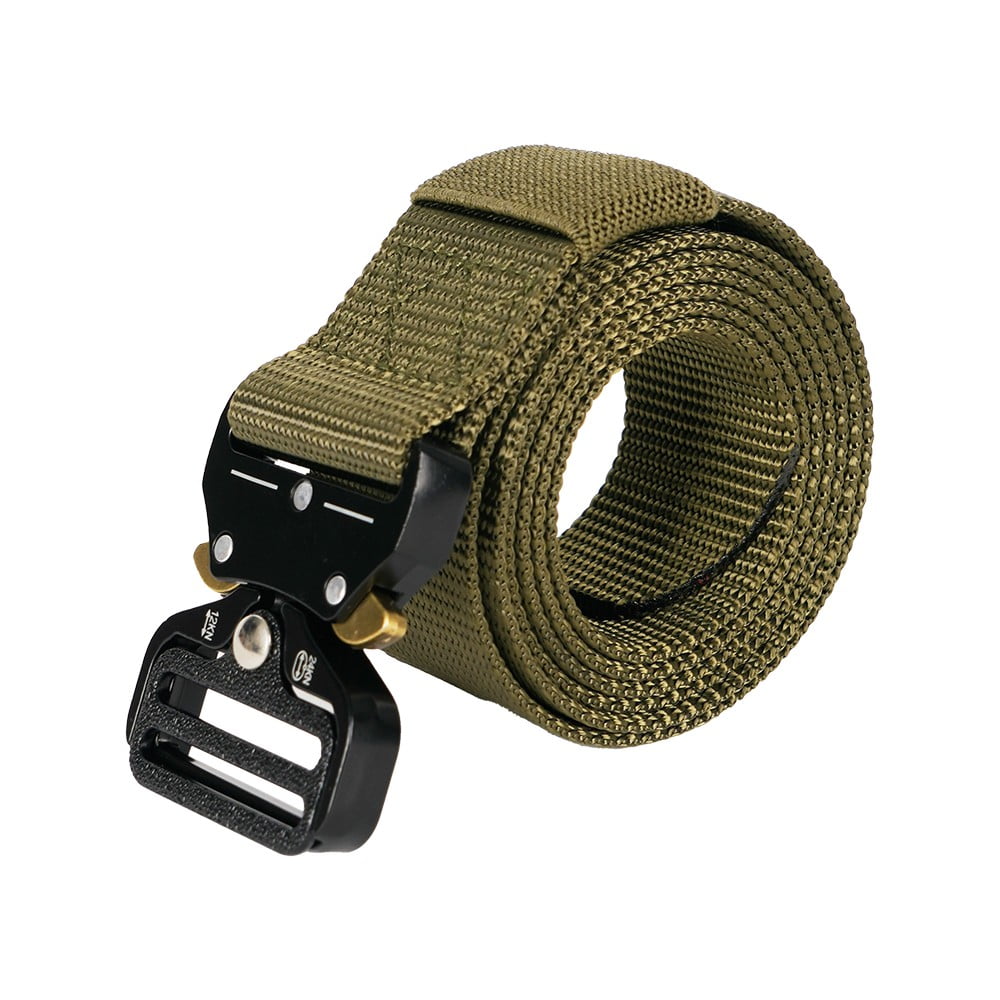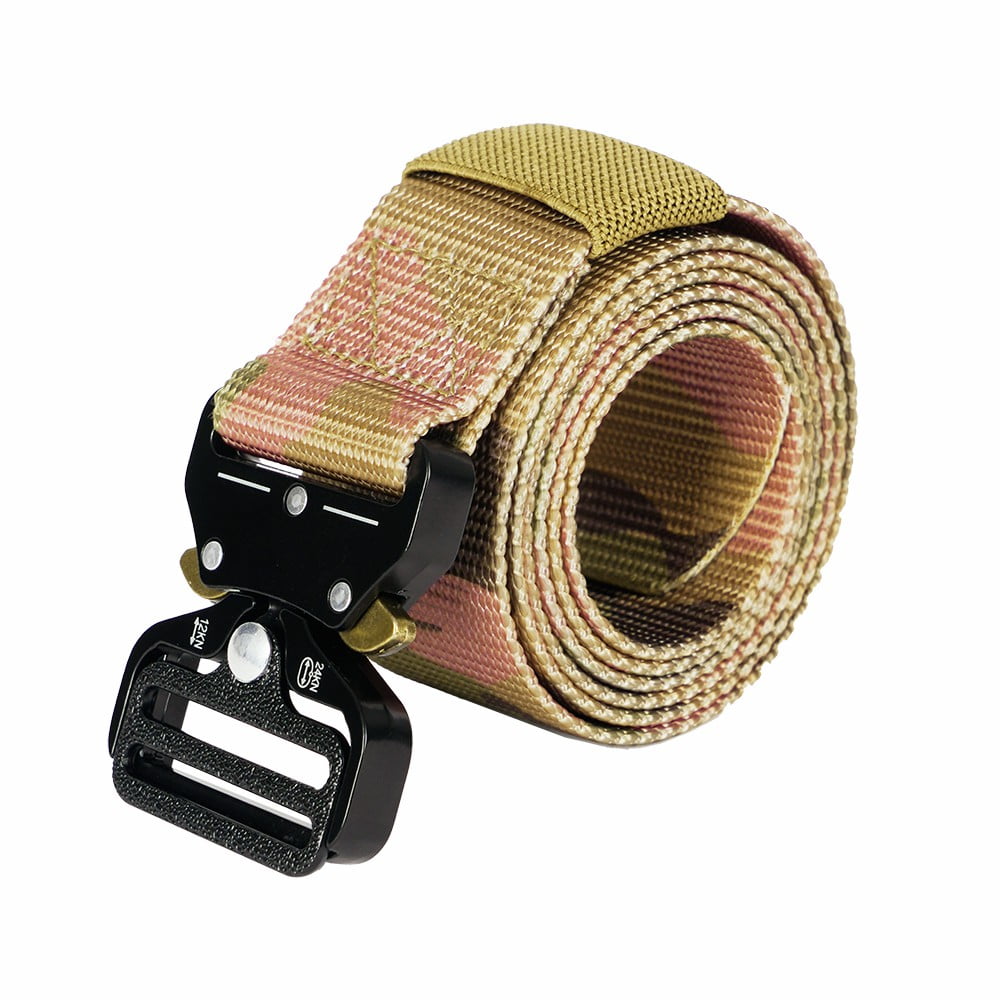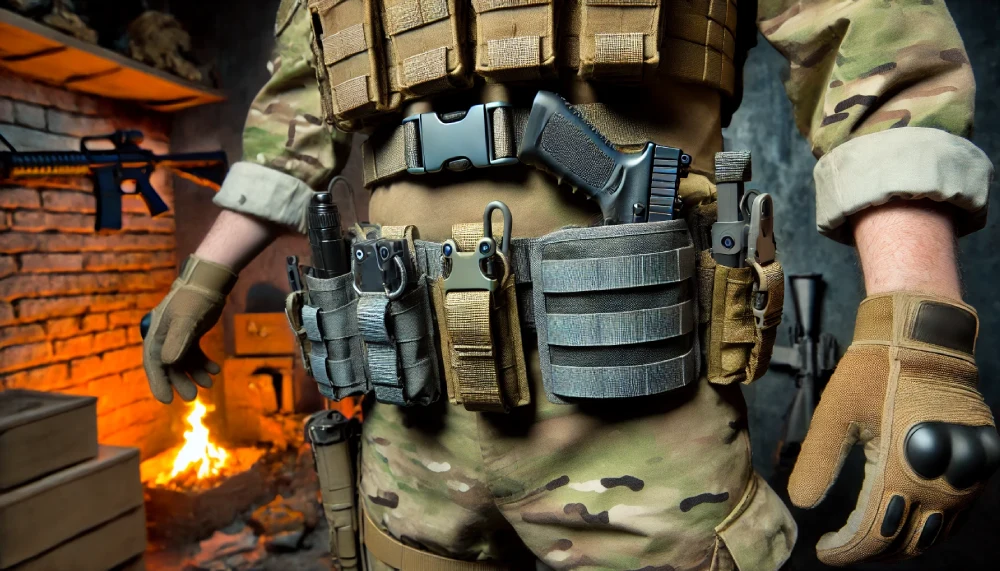In the tense and exciting battlefield environment, every warrior needs well-equipped and fully functional combat aids. Among them, the tactical belt, as an important equipment of the warrior’s waist, not only carries a variety of necessary combat supplies, but also the warrior’s right-hand man to defeat the enemy!
1. Tactical Belt Overview
The tactical belt is designed with full consideration of the various needs of warriors on the battlefield, integrating multi-functionality. It is usually equipped with a number of independent pockets and buckles, which can be categorized to store a variety of small items, such as ammunition, knives, flashlights, and more. These pockets and buckles are well laid out, making it easy for soldiers to quickly access the equipment they need in an emergency.
1.1 Personalization
The tactical belt can also be personalized according to the needs of the soldiers, such as the addition of walkie-talkies, water bottles, and other fixed buckles, to ensure that the soldiers in the execution of the task can be handy.
2. Historical Development of Tactical Belts
2.1 Early Origins
The beginnings of the tactical belt can be traced back to the belts and harnesses of ancient warfare. In ancient times, whether in the East of China or the West of ancient Greece and Rome, warriors needed to carry a variety of short and long weapons and auxiliary facilities on the battlefield.
2.2 Modern Development
In the modern era, with the progress of military science and technology and changes in the form of war, the design of the tactical belt has gradually improved. Especially in the late 19th century, the U.S. Army began to unify the use of canvas belts to meet the needs of the army’s large-scale equipment.
2.3 20th Century Evolution
During the 20th century, tactical belts saw revolutionary changes with the outbreak of the two world wars. The U.S. Army introduced the M1910 rigging system, which significantly advanced belt design.


3. Key Features of Modern Tactical Belts
3.1 Multifunctionality
Modern tactical belts are usually equipped with multiple pockets, hanging points, and modules, enabling the carrying of tactical equipment and daily necessities to meet the needs of different missions.
3.2 Modular Design
Through modular design, soldiers can freely combine and replace different modules according to their needs and mission characteristics, allowing for personalized customization of the tactical belt.
3.3 Lightweight and Durable
Modern tactical belts are made of high-strength lightweight materials such as nylon and Kevlar to reduce the weight burden while ensuring durability.


4. Tactical Belt Materials
4.1 Nylon
Nylon is a synthetic fiber known for its high strength, abrasion resistance, water resistance, and light weight. Military-grade nylon webbing is commonly used in tactical belts.
4.2 Polyester Fiber
Polyester is another synthetic fiber with good abrasion resistance and shape retention, often used in tactical belts to enhance durability.
4.3 Leather
Leather is a traditional material used in some tactical belts, especially for vintage styles or high-end custom designs. However, leather tends to be heavier and more expensive than synthetic alternatives.
4.4 Special Steel
Specialty steel is often used to create the buckles and snaps of tactical belts, offering advantages like corrosion resistance and durability.
5. Performance and Quality of Tactical Belts
5.1 Weight-Bearing Capacity
A tactical belt must have a high weight-bearing capacity to carry tactical equipment and heavy objects. Military-grade nylon webbing is commonly used for this purpose.
5.2 Durability
Tactical belts need to withstand various harsh environments, including abrasion, water, and low temperatures. Buckles and other components also need to be made from high-quality materials for long-term stability.
5.3 Comfort
Comfort is essential for tactical belts. The material should be soft, breathable, and able to minimize friction and pressure on the skin. The width and length should also be adjustable to fit different body types.
5.4 Flexibility and Concealment
Tactical belts should offer flexibility, with well-designed hanging points and pockets for easy access. In certain missions, the belt’s color and design should provide effective concealment.
6. Tactical Belt Roles in Modern Warfare
6.1 Equipment Mounting and Rapid Access
Multi-functional carrying capabilities allow for the flexible arrangement of tactical gear, such as ammunition and communication devices. Quick change and resupply options are crucial in maintaining continuous firepower during combat.
6.2 Body Support and Protection
The tactical belt provides support around the waist, helping maintain body balance during long marches or combat. Some advanced tactical belts also offer protection against sharp objects.
6.3 Adaptability and Personalization
Modular design allows for the customization of the belt to meet mission requirements and individual preferences, improving its adaptability.
6.4 Covert and Mobility Enhancements
Tactical belts are designed to be lightweight and concealed, enhancing mobility and reducing detection by the enemy during infiltration or reconnaissance missions.
7. Conclusion
The tactical belt plays an indispensable role in modern warfare. It is an essential carrier of equipment, directly related to a warrior’s combat effectiveness, survivability, and comfort. With continuous advancements in military technology, tactical belts will continue to evolve to meet the needs of modern warriors.

